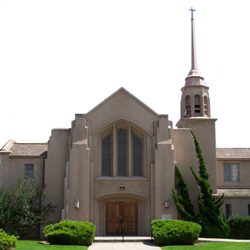“Praying With Nature”
A meditation based on Psalm 19
March 11, 2018
Community Congregational Church of Chula Vista
Dr. Sharon R. Graff
* * * * *
Once upon a time there was a man who loved God. Very much. He was not unlike most of you. He lived faithfully. He chose community as his teacher. This man was asked one day about his journey of faith, and he mused that he could have chosen any path, for humbly he confessed, he had many gifts from God and many opportunities to use them. In the next breath, and with a wink and a smile, he admitted he was very grateful for the path he was on. Did I mention he was not unlike most of you?! The questioner asked him another question…why do you do what you do? And the man who loved God very much replied, “I do it because it is hard…” The questioner was startled. Rarely does someone say with a grin that they chose a path in life because it is hard to do, and even more rarely do they admit to that with another! But the man said it again…”I chose this path because it is hard.” Then, with a lovely flow, like something let loose from a dam after a long time pooling behind it, the man explained:
“Because I am not sure I can do it all, let alone do it well, and do it for years and years, perhaps for my whole life…I cannot think that way. I try to be good [at what I do] for a week at a time. Walking helps greatly, I find. Also birds. We have a resident heron here who has been a great help to me. Sometimes he or she is right there by the reeds when I am in pressing need of a heron. I have come to think that the birds are shared of faith themselves in mysterious ways. You could spend a whole life contemplating birds and never come to the end of the amazing things they do. There are many swallows here and I spend hours at a time watching them conduct their intricate maneuvers. They have the loveliest gentle chitter with which they speak to each other in the air. Remarkable creatures altogether…”
This man who loves God very much, sounds a lot like today’s psalmist, doesn’t he? The psalmist nearly overflows with enthusiasm as he or she looks up and sees God in the starry heavens; and looks back in time and sees God in the days and the nights; and looks out and sees God through the rising sun and the creatures of earth and the green plants and tall trees and the budding flowers. A breathtaking moment, to realize that God’s own words are heard through and in and with nature. The psalmist declares, “Day to day pours forth speech…night to night declares knowledge…yet there is no literal speech…nor are there really words…there is no audible voice…yet God’s voice goes out through all the earth and God’s words to the end of the earth.” Said simply, God is experienced in and through the beauty of nature.
Friends, this stream of understanding has always been a part of the Christian tradition, albeit sometimes it has been underground and protected from the dominant religious language. Yet, season by season, century by century, the Divine has continued to shine light through each rising sun and setting moon; and the Divine has continued to reflect vibrancy through growing forests and blooming deserts; and the Divine has continued to speak knowledge through lion’s roar and otter’s chirp and whale singing. This does not mean that these parts of nature are God. It does mean that God is capable of speaking love and compassion and truth and even messages of challenge through all of the natural world, including us. Day to day pours forth speech and night to night declares knowledge.
Today’s psalm is a wonderful example of the type of prayer that is built on this truth…that God can be experienced deeply through nature. I call this type of prayer “gazing prayer.” It usually has few words, if any at all. It is quiet and simple and anyone can do it.
Here is what spiritual teacher, author and UCC minister Jane Vennard, says about gazing prayer:
Many of us were taught to close our eyes when we pray. To gaze is to fix one’s attention in one place, but in a relaxed way. Praying by gazing is an ancient prayer practice that involves keeping our eyes wide open, taking into our heart what the image visually communicates. We focus not on what is seen in the photo or item, but rather on what is seen through it – the love of God expressed through God’s creatures. This is prayer without words, where the focus is on being in God’s presence rather than performing in God’s presence. It is a right-brain experience of touching and feeling what is holy…Praying by gaze can be practiced in community by gazing at one object together…or alone by gazing at the created world in the midst of our busy lives. Gazing helps us attend to the holy that surrounds us in art, nature, and other people. Like other methods of prayer, gazing brings us into a deeper and more intimate relationship with God and opens the possibility of union with our Maker, the ultimate goal of the Christian spiritual life…[these] are doorways into stillness, into closeness with God. If we sit with them, we just may discern the voice of God.
I have practiced gazing prayer in museums when I sense a connection with a particular treasure or painting; also in gardens large and small, manicured and wild; most recently on the Strand just last week, gazing at the waves rushing the shore.
Gazing prayer can really be practiced anywhere you can slow down for just a bit, and take some time and attention to notice your surroundings. Gazing prayer begins with your choosing such a place or a scene in the natural world, and traveling there, either in real time or in your imagination. And when you arrive at that place where God is displayed, you stop. You stop your distracting thoughts. You stop your worrying. You stop your physical movement. You take a rather large pause from your usual routine. And then, as you are stopped, you gaze at God as God is displayed and real in that place of nature.
One of my colleagues speaks of this type of prayer as “noticing prayer,” where you stop long enough to really notice the ways God is telling you something through that tree, or that rosebush or those gentle waves rushing the shore. You see, in our tradition of being part of the United Church of Christ, we already are inclined in this direction to gaze upon God through nature. One of our slogans is that God is still speaking…and by that we mean that God speaks beyond scripture and beyond the tradition and beyond the stories of the saints. When we affirm that God is not confined to the past, but is in fact still speaking, we lay the groundwork for this gazing prayer to make a real difference in our spiritual lives. For we understand that we are not gazing at the tree, as if that tree is God. No. We are gazing at the tree because God can and will speak through it, without actual words and devoid of human speech, yet God will make God’s message to you known in and through that tree as you gaze upon it. This I can promise!
Gazing prayer does take some practice, so I thought today would be a great time for that! When you entered worship, you were invited to select a photo from nature. Bring that photo out now, and hold it where you can easily see it, and I’ll talk you through this first time. Does anyone need a photo?
To begin your gazing prayer, you may want to focus a moment on the candles up front, for flame is a metaphor for prayer, inviting us into the presence of the holy. Now look at your chosen photo. See it as a point of connection with Jesus, with God, with Spirit, with the community of faith, with that which you call holy. Try extending your hands and turning your palms upward, a gesture both of openness to God’s grace and the gift of your hands to God. Continue to gaze at your chosen photo. Even though you may feel pressured by the demands of your life right now, try not to hurry this gazing prayer. Better to gaze for a short time with quiet attention. As you gaze, be aware of your breathing. You are breathing in life itself, breathing in God’s peace. You are breathing out praise and gratitude, breathing out your appeals for help, breathing out your pain and your worries. Continue gazing at your chosen photo. And as you gaze, listen. God is not an idea; gazing praying is not an exercise to improve our idea of God. Gazing prayer is cultivating your awareness of God’s actual presence. All you have to do is look—with attention and with intention—and be open to God speaking to you. As you gaze, rest your eyes on what you see, what draws you, and let it still you. Though your eyes and thoughts may be drawn elsewhere, bring them back to the picture or image that is the focus of your gazing prayer as often as you need. Continue gazing and continue to listen. As you continue gazing, let’s take a moment or two of silence now together…
What words of God do you hear? [share aloud]
“Day to day pours forth speech, and night to night declares knowledge…God’s voice goes out through all the earth, and God’s words to the end of the world.” Remember, the psalmist’s world was flat (that’s what science said at that time), and so the message in this psalm is that all beings and elements and particles of nature are mouthpieces for the Divine. From one end of the earth to the other, day and night, high and low, tiny and magnificent…God’s messages are there for our noticing. And gazing prayer helps us notice. Product warning here: I suggest you not practice gazing prayer while you’re driving J, but do find ways to practice one or two stealth gazing prayer sessions this week. Maybe on a walk, or while seated at a window in a restaurant waiting for your meal, or in the middle of your work day. Take a deep breath. Look around you and fix your gaze on something that catches hold of your soul. Then gaze. And listen. And gaze some more. Breathe in and out and attend to God’s message for you.
Amen and Blessed Be

